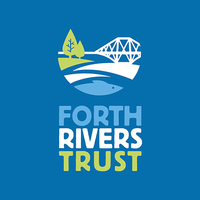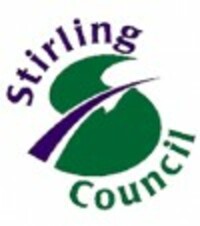Many thanks to Callander Youth Project Trust for facilitating this camera's location and to The Forth Rivers Trust &
Stirling Council Fishing for capitally funding its installation. The confluence of the River Leny and the Eas Gobhainn at Callander gives rise to the River Teith, which flows in a generally south-easterly direction until it meets the Forth at Stirling. Several significant left bank tributaries join the river, including the Keltie Water and the Ardoch Burn. The name "Teith" originates from the Scottish Gaelic "Uisge Theavich," meaning "the pleasant river." Callander serves as the eastern gateway to Scotland's Loch Lomond and the Trossachs National Park, the country's first national park. Due to its location, it is often referred to as the "Gateway to the Highlands."Archaeological excavations in 2001 uncovered a Neolithic settlement located south of the River Teith, revealing evidence of a 25-meter-long timber building and Neolithic pottery. Near Keltie Bridge, just east of Callander, stands the Auchenlaich Cairn, the longest Neolithic chambered cairn in Britain, measuring 322 meters in length. The remains of an ancient hillfort overlooking Loch Venachar, near Kilmahog, can also be seen at Dunmore, showing signs of vitrified stonework and featuring a well. Not far from there, the Roman ramparts constructed during Agricola's campaigns in the first century AD are visible at Bochastle Farm.In the early sixth century, Saint Kessog, a disciple of Columba of Iona, preached and taught in the area. A small circular mound by the River Teith, known as "Tom na Chessaig," meaning "the Hill of Kessog" in pseudo-Gaelic, is believed to have been constructed as a memorial to the saint or possibly remains of Callander's original church. Although identified as a medieval motte, no excavations have definitively confirmed this. Historical records mention an annual market called "Feill ma Chessaig" (festival of Kessog) held in the area until the early 19th century.Callander Castle, a medieval tower house, once stood south of the River Teith. Described as "a square tower of considerable height," the castle belonged to the Livingstons of Callendar House near Falkirk. Today, only some masonry and a potential datestone inscribed with 1596 remain, now incorporated within the old St Kessog's Manse on the same site.In 1645, during the campaigns of Montrose, a battle took place at Callander between the Campbells of Argyll and the Atholl men. The Campbells were targeting the McGregor and McNab clans for their allegiance to Montrose. While besieging Castle Ample, the Campbells were surprised by the arrival of 700 Atholl men under Inchbrakie. The Campbells attempted a retreat southwards but were overtaken near the village of Callander as they crossed a ford to the east. Inchbrakie's forces attacked from behind, resulting in the Campbells breaking and fleeing, leaving eighty of their men dead on the battlefield.Although the exact date of the area's initial settlement is unknown, Callander is mentioned in parish records dating back to at least the 15th century. The Medieval Parish of Callander comprised a mix of estates, settlements, and farms, some of which are still reflected in present-day street names such as Murdiestoun, Balgibbon, and East Mains. The region around Callander was cleared for sheep before 1800 as part of the early stages of the Highland Clearances.Scottish Gaelic was once widely spoken in the area. In 1803, the poet William Wordsworth and his sister Dorothy visited Callander and the Trossachs, documenting encounters with Gaelic language and culture. In the 1840s, sermons were delivered in both Gaelic and English, and Gaelic was taught in at least two schools in the area. By the 1880s, most locals spoke a combination of Gaelic, Scots, and English. In the early 1900s, Celtic scholar William J. Watson recorded the presence of four Gaelic-speaking men born near Callander, two of whom were over 80 years old and had excellent knowledge of local place-names. However, one 19th-century writer, Alexander MacGibbon, expressed disdain for the local dialect, considering it incapable of conveying noble ideas.Callander was served by a railway from July 1, 1858, as the terminus of a branch line from Dunblane. Another Callander railway station opened about half a mile west, behind the Dreadnought Hotel, on June 1, 1870, when the railway was extended to Killin en route to Oban. This second station closed on November 5, 1965. Sections of the former Callander and Oban Railway line, between Callander and Strathyre, and betweenBalquhidder and Killin Junction, now form part of the National Cycle Network (route 7) and the Rob Roy Way. Interestingly, the track from the dismantled Callander and Oban Railway was repurposed for the construction of the transit system used during the 1968 Summer Olympics in Mexico City. To monitor river levels for salmon fishing, recreational river users, and potential flooding, the Farson webcam is strategically positioned on the River Teith in Callander..







